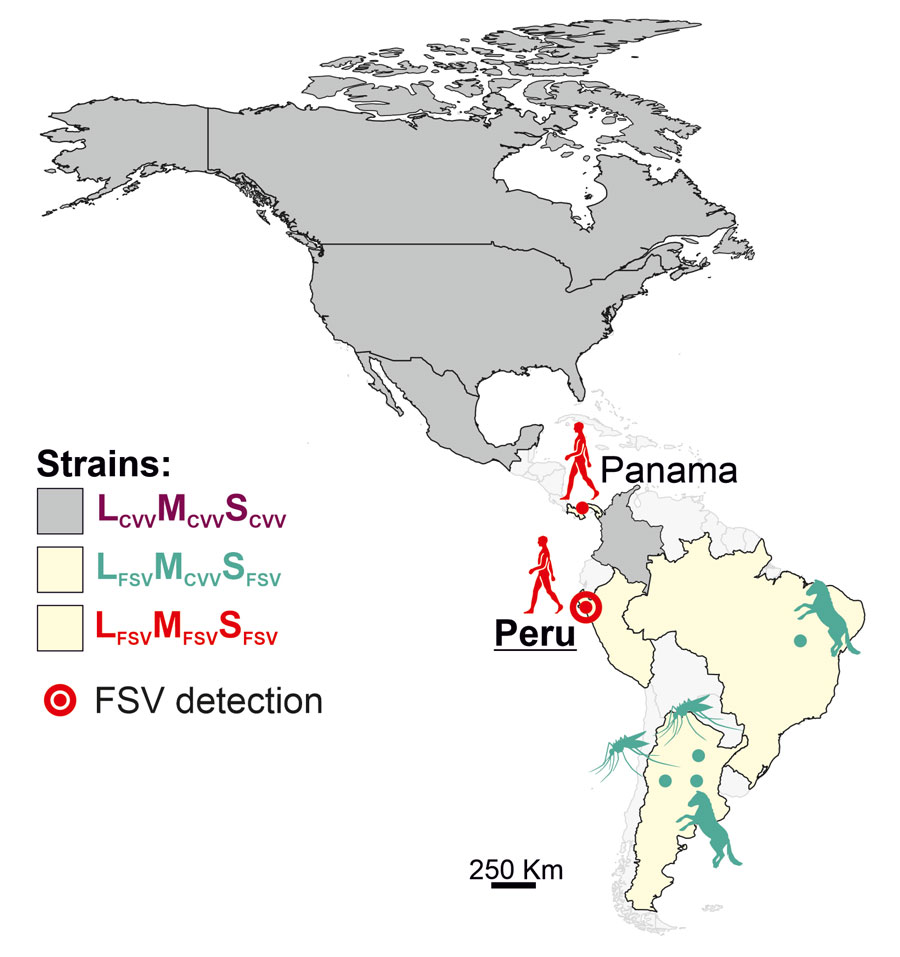Volume 30, Number 10—October 2024
Research Letter
Fort Sherman Virus Infection in Human, Peru, 2020
Figure 1

Figure 1. Geographic distribution of CVV and both FSV strains along the North and South American continents in study of FSV infection, Peru, 2020. Additional information on the sequences used to build the figure is provided (Appendix Table 1). CVV, Cache Valley virus; FSV, Fort Sherman virus; L, large segment; M, medium segment; S, small segment.
Page created: September 04, 2024
Page updated: September 24, 2024
Page reviewed: September 24, 2024
The conclusions, findings, and opinions expressed by authors contributing to this journal do not necessarily reflect the official position of the U.S. Department of Health and Human Services, the Public Health Service, the Centers for Disease Control and Prevention, or the authors' affiliated institutions. Use of trade names is for identification only and does not imply endorsement by any of the groups named above.